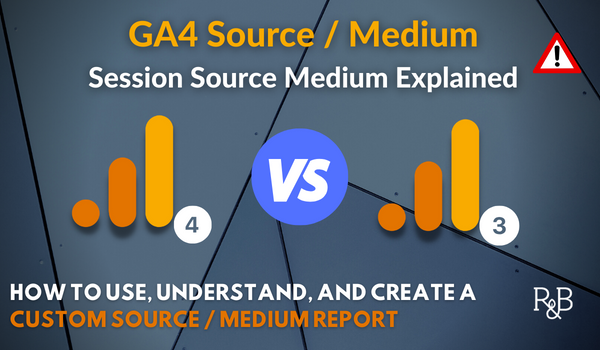Important Overview to Secondary Dimensions in Google Analytics: Definition, Advantages, and Applications
Important Overview to Secondary Dimensions in Google Analytics: Definition, Advantages, and Applications
Blog Article
Unveiling the Influence of Secondary Dimension in Google Analytics on Information Analysis and Insights
In the realm of information analytics, the application of additional measurements within Google Analytics has emerged as a pivotal tool for drawing out deeper understandings and unraveling complex patterns that might otherwise continue to be obscured. By peeling back the layers of key data sets, additional measurements provide a nuanced viewpoint that enriches the understanding of user behavior, website performance, and the effectiveness of advertising and marketing techniques.
Exploring the Principle of Second Measurements
Second measurements in Google Analytics supply extra understandings by enabling individuals to evaluate main data in combination with a second characteristic. By integrating secondary dimensions, users can delve much deeper right into the information and discover valuable correlations that may or else go unnoticed - what is a secondary dimension in google analytics.
By exploring the different second dimensions available in Google Analytics, customers can open new understandings and maximize their electronic advertising initiatives. In significance, second measurements serve as an effective tool for improving information analysis and driving actionable results.
Enhancing Information Analysis With Additional Measurements
Having established the foundational understanding of additional measurements in Google Analytics and their crucial role in data evaluation, the focus now moves in the direction of leveraging these secondary features to enhance the interpretation of analytics information (what is a secondary dimension in google analytics). By including second dimensions into data evaluation, experts can acquire much deeper understandings into user behavior, website performance, and advertising and marketing performance

In addition, secondary dimensions help in contextualizing key information metrics by providing added layers of info. This contextualization help in recognizing the 'why' behind the data trends, assisting experts make educated choices and optimizations to improve overall efficiency. Ultimately, including additional dimensions enriches the information analysis process, leading to more purposeful insights and strategic actions.
Uncovering Hidden Insights Via Secondary Dimensions
Discovering the midsts of analytics information with secondary dimensions exposes beneficial insights that would or else remain obscured. By integrating secondary measurements in Google Analytics, services can uncover hidden patterns, fads, and relationships that provide a more detailed understanding of customer actions and internet site efficiency. These added layers of information allow analysts to delve deeper into the key measurements, such as traffic sources or landing web pages, and gain an extra nuanced point of view on how various variables engage with each various other.
Through making use of additional measurements, experts can segment and compare information throughout numerous measurements, enabling them to recognize details factors that influence customer involvement, conversion rates, and general success metrics. By coupling the primary measurement of 'tool group' with the secondary measurement of 'age group,' marketers can pinpoint which age demographics favor accessing the web site with mobile tools versus desktops. This level of granularity encourages businesses to make data-driven choices and enhance their methods for far better results. Ultimately, discovering covert understandings through second measurements boosts the depth and precision of data evaluation, resulting in more informed decision-making and improved efficiency end results.
Leveraging Additional Dimensions for Actionable Analytics
Structure upon the understandings revealed with second dimensions in Google Analytics, organizations can now harness this enriched information landscape to drive workable analytics and calculated decision-making. By leveraging secondary measurements, companies can delve deeper right into their information to draw out valuable patterns, fads, and connections that might have formerly gone unnoticed. This deeper level of evaluation makes it possible for services to get a more extensive understanding of customer habits, campaign efficiency, and total site effectiveness.
One trick benefit of making use of additional dimensions for workable analytics is the ability to section information based on particular standards. This division enables companies to customize their strategies and campaigns to different target market teams, bring about a lot more targeted and effective advertising initiatives - what is a secondary dimension in google analytics. Additionally, secondary measurements provide an even more holistic view of customer interactions, making it possible for companies to optimize their website content, design, and total individual experience
Maximizing Decision-Making With Secondary Dimensions
To boost tactical decision-making in analytics, leveraging second dimensions in Google Analytics can give an extra nuanced point of view on individual actions and project efficiency. By incorporating additional measurements into data analysis, organizations can dive much deeper into the specifics of their web site visitors' communications and involvement patterns. This added layer of info permits a more thorough understanding of how various you can find out more variables, such as demographics, tools, or traffic sources, impact key performance indicators.

Verdict
In conclusion, using second dimensions in Google Analytics plays a critical function in enhancing information evaluation and revealing concealed insights. By exploring this idea, one can acquire a much deeper understanding of individual behavior and make informed decisions based on workable analytics. Leveraging second measurements enables an extra comprehensive interpretation of information and makes the most of the efficiency of decision-making processes.

Report this page